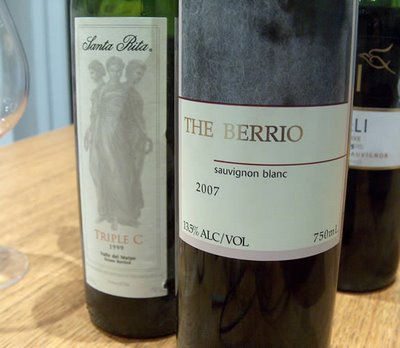
As I've mentioned here before, I often do blind tastings at home where I let Fiona select at random from the sample rack and then present me a few wines double-blind. It's a really useful educational experience, although you could argue it's not truly double-blind, because I have some idea of what wines are sitting there (usually around 250 different bottles).
Tonight's two are detailed below. I'm reproducing the notes I made as they were made, and then adding some brief comments made after the wine was revealed.
Wine 1. White. Fresh, spritzy and vibrant. A youthful white with zippy acidity and a spritz. Light, dry and a bit mineralic. There's a touch of herbaceous methoxypyrazine character. I think it's a youthful warm climate Sauvignon Blanc. Price guessing: £5. [It's the Flagstone 'The Berrio' Sauvignon Blanc 2007 Elim, South Africa. Tasting it sighted, I think I was a bit unfair calling this a £5 wine, or is this just the sight of the label speaking? It's quite refined and very refreshing, but there's a strong cool-climate feel here: it reminds me a bit of some of the Leyda Sauvignons I tried in Chile.]
Wine 2. Very deep coloured red/black. Rich, dark fruit here: quite weighty with a tarry edge to the dark fruits, together with just a hint of rubberiness. It's ripe and powerful, with black fruits showing some evolution. There's some oak and a hint of mint. Tastes quite expensive, and it has some evolution. It doesn't taste Australian, but it's new world. Chilean? I reckon a high-end Chilean Cabernet-based wine. Price £15. It's quite attractive; almost Bordeaux like in places. [It's the Santa Rita Triple C 1999 Maipo, Chile. Tasting it sighted, a bit later, this does have a lovely evolved aromatic presence that has a bit of a minerally, gravelly, tarry Bordeaux finesse. The palate is nice but doesn't quite match that - there's a hint of bitterness on the finish. Interestingly, this is more than half Cabernet Franc. It's quite a serious effort, actually. I'm pleasantly surprised.]
Interestingly, the Faustino VII Rioja Semi Crianza 2005 Spain (£5.99 Co-op) I opened earlier is remarkable, in that it's a widely available commercial brand, but it's stuffed full of (what my palate takes to be) Brettanomyces. It's worth trying if you haven't experienced a bretty wine before, I reckon.
Labels: blind tasting, brettanomyces, Chile, Rioja, Sauvignon Blanc, south africa
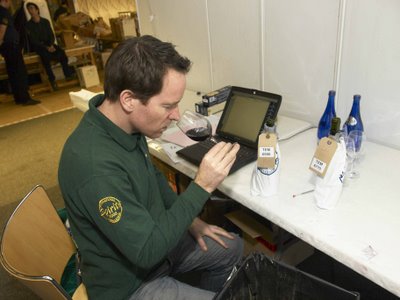

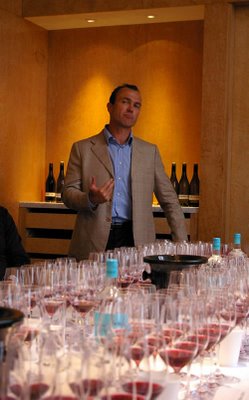
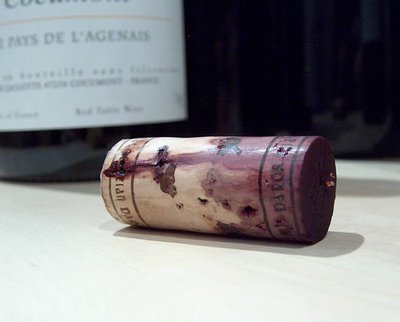
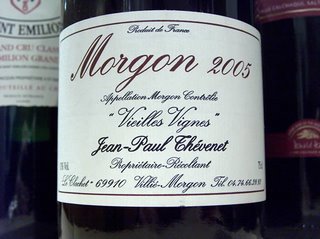
 The web log of wine journalist Jamie Goode. Feel free to nose around; your comments are welcome
The web log of wine journalist Jamie Goode. Feel free to nose around; your comments are welcome 
